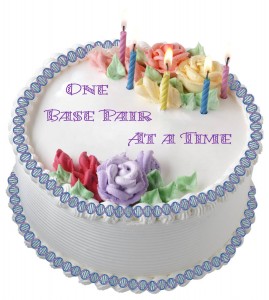Categories: epidemiology, genomics, whole genome sequence
September 6th, 2012 1:00 pm ET -
Marta Gwinn, Consultant, McKing Consulting Corp, Office of Public Health Genomics, Centers for Disease Control and Prevention

Staphylococcus aureus bacteria
Late last year, Science magazine published a list of six Areas to Watch in 2012. Number 6 on the list, NASA’s Curiosity rover, recently touched down on Mars. The Higgs boson (#1) has been found, faster-than-light neutrinos (#2) have been debunked, and further developments on stem-cell metabolism (#3) and treatments for intellectual disability (#5) are in progress.
Now genomic epidemiology (#4) is approaching the public health launch pad. As Science’s editors predicted, pathogen genome sequences are being used to “determine quickly where newly emerging diseases come from, whether microbes are resistant to antibiotics, and how they are moving through a population.”
 Post a Comment -
Read more
Post a Comment -
Read more

Categories: genomics, whole genome sequence
January 12th, 2012 1:18 pm ET -
Marta Gwinn, Consultant, McKing Consulting Corp, Office of Public Health Genomics, Centers for Disease Control and Prevention

There was no cholera in Haiti until October 2010, when epidemic cholera swept the country. Within 6 months, more than 250,000 people were sickened and 4,000 died. A catastrophic earthquake earlier that year had exacerbated human and environmental risks by displacing millions of people and disrupting public health infrastructure. But there would have been no epidemic without the bacterium, Vibrio cholerae. How did the pathogen enter the picture?
 1 Comment -
Read more
1 Comment -
Read more

Categories: genomics, whole genome sequence
November 3rd, 2011 9:56 am ET -
Muin J Khoury, Director, Office of Public Health Genomics, Centers for Disease Control and Prevention

The popular proverbial saying “you cannot have your cake and eat it too” implies that one cannot consume something and preserve it at the same time–in other words, we cannot have it both ways. Well, for once, maybe we can have our cake–our whole genome sequence (WGS)–and eat it too. I believe having our WGS and consuming it in small bite sizes over a lifetime may be the only way to integrate it into medicine and public health.
Rapid advances in genomic sequencing technologies are making the possibility of reliable and affordable whole genome sequencing (WGS) a reality in the next few years. We all carry about 6 billion base pairs of DNA in each of our cells, with 5-10 million inherited variants that are different among us. This genetic variation along with environmental influences provides a blueprint for health throughout the life span, and is related to virtually every disease of public health significance. There is definite interest among the public and scientists about the personal utility of this information. In a recent survey by Nature, attitudes towards genome sequencing were explored among a sample dominated by scientists and professionals from medicine and public health. Although only 18.2% of respondents had had their genome sequenced or analyzed, 2/3 of those who had not reported they would take the opportunity should it arise. Curiosity was reported as the main single factor influencing respondents.
 4 Comments -
Read more
4 Comments -
Read more





